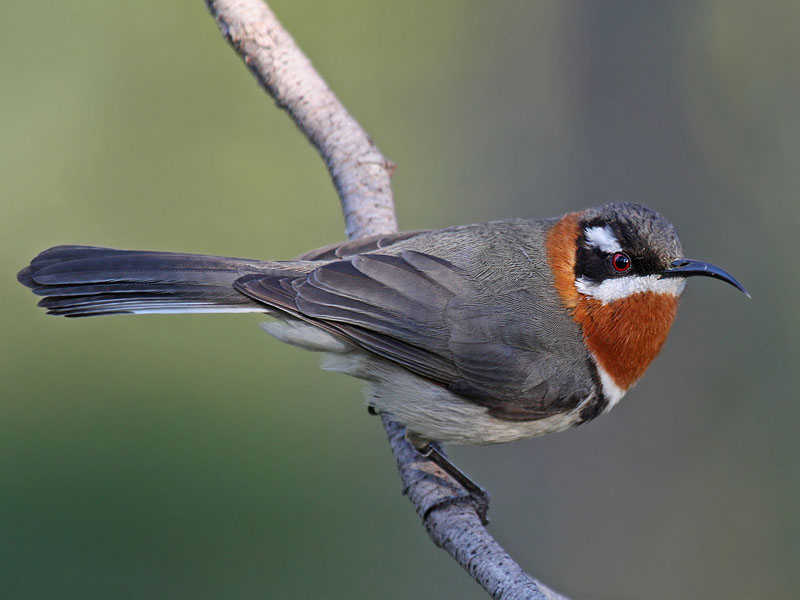Colours
Distinguishing features
Males are, on average, slightly larger than females. The sexes differ somewhat in plumage. The male is dark olive-grey above with a chestnut nape. Below, his throat and breast are chestnut, edged below with a white band and a black band; his abdomen is buff. He has a white eyebrow and a black mask, and white outer tail feathers which are "flirted" in flight. The female is plainer, with a pale rufous nape. Her throat and underparts are variously described as rufous-buff or pale grey, and she lacks the distinctive banding of the male. The immature resembles a plainer female, though with a yellow base to the bill (Wikipedia).
Size
- From 12 cm to 16 cm (Length of specimen) - applies to Mature specimens
Weight
- From 0.008 kg to 0.011 kg - applies to Mature specimens
Wingspan
- Wingspan data is not yet available.
Synonyms
Distribution
Distribution and habitat preferences
Endemic to the southwestern corner of Western Australia, the Western Spinebill is found from north of Jurien Bay to Israelite Bay, and inland to an arc described by Moora, Corrigin and Lake Grace. It is common in the understorey of heaths, coastal scrub, woodlands and forest, and in Banksia thickets (Wikipedia).


